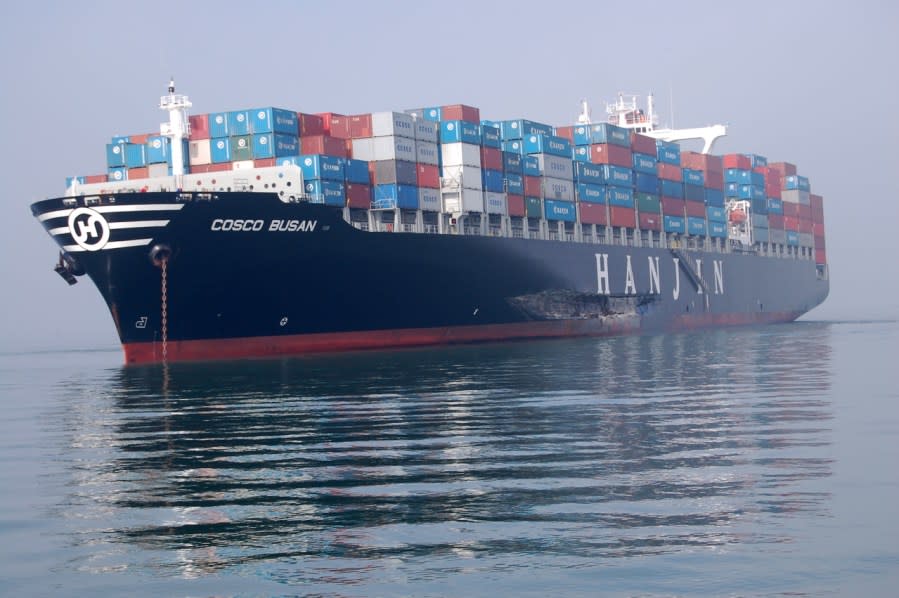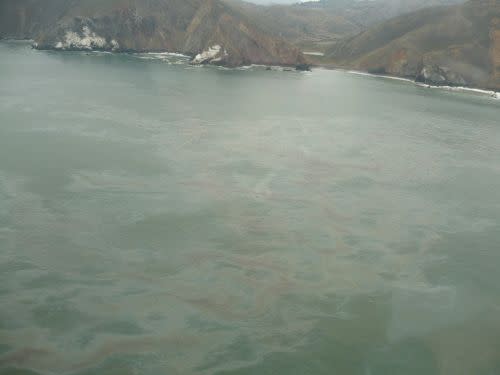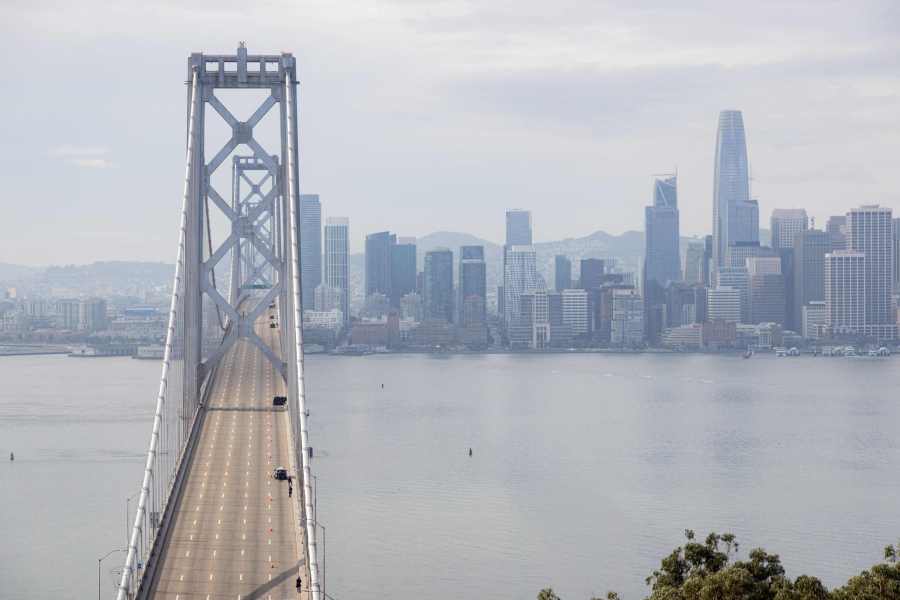The day a cargo ship crashed into SF Bay Bridge
SAN FRANCISCO (KRON) — Bridges are important lifelines connecting the San Francisco Bay Area and disasters like Tuesday’s bridge versus cargo ship crash in Baltimore have happened here.
The Bay Area has eight large toll bridges and cargo ships pass under some of them. A ship strike is rare, but that’s what happened on the morning of Nov. 7, 2007.
The container ship M/V Cosco Busan struck one of the towers of the western span of the San Francisco-Oakland Bay Bridge because of a “pilot’s blunder in the fog,” according to the National Oceanic and Atmospheric Administration.
Dense fog cloaked the bay when the collision occurred.

“The impact tore a large gash in the hull of the vessel, releasing 53,000 gallons of fuel oil into the water. It became obvious that more than 50,000 gallons of thick tarry oil were spreading across the Bay. The oil quickly spread to other parts of the Bay and the outer coast … washing ashore along many miles of sensitive coastline,” NOAA wrote.
The Bay Bridge’s beam infrastructure was designed to absorb energy from a ship strike, and this design prevented the bridge from collapsing and sustaining major damages.
PHOTOS: Cargo ship crashes into Baltimore Key bridge Tuesday
CalTrans spokesman Bart Ney explained that Bay Area bridges have a “protection device around it that is a fender system that is completely different than the bridge foundations. It’s designed to absorb the energy.”

In 2007, no injuries or fatalities resulted from the 901-foot-long cargo ship’s crash, but the fuel spill contaminated 26 miles of shoreline, NTSB investigators said.
The bunker fuel congealed in cold water temperatures. Wind and tides spread oil across the bay and into the Pacific Ocean. Oil washed up on beaches as far south as Pacifica and as far north as Muir Beach. Several miles of beaches were closed during a $70-million environmental cleanup effort.
“Bunker fuel proved especially toxic to sea life. Fish and birds were highly impacted, with more than 6,800 dead birds documented, including many marbled murrelets, a threatened species,” NOAA wrote.

The ship’s owner, Fleet Management Ltd., was held accountable with a $44-million civil settlement in 2011. Fleet Management, a Hong Kong-based ship management firm, also pleaded guilty to a criminal violation of the Oil Pollution Act, as well as felony obstruction of justice “for creating false and forged documents after the crash at the direction of shore-based supervisors with an intent to deceive the U.S. Coast Guard,” the U.S. Department of Justice stated.
The pilot of the Cosco Busan, Captain John Cota, pled guilty in 2009 for his role in the crash.
Following Tuesday’s ship strike in Baltimore, officials with the Golden Gate Bridge Highway and Transportation District touted safety measures used for SF’s most famous bridge.
The Golden Gate Bridge has the most robust ship collision protection of any bridge on the West Coast, said GGBHTD spokesperson Paolo Cosulich-Schwartz.
Cosulich-Schwartz wrote, “The North Tower sits half on land and half in the water, and a large vessel would run aground before colliding with the pier. The South Tower, which is anchored to bedrock beneath the water, is protected by a concrete fender ring extending 40 feet deep, the same depth drawn by a large ship. The concrete fender is filled with sand, similar to a highway crash barrel, and is 27 feet thick at its base, providing significant protection against collisions.”
For the latest news, weather, sports, and streaming video, head to KRON4.

